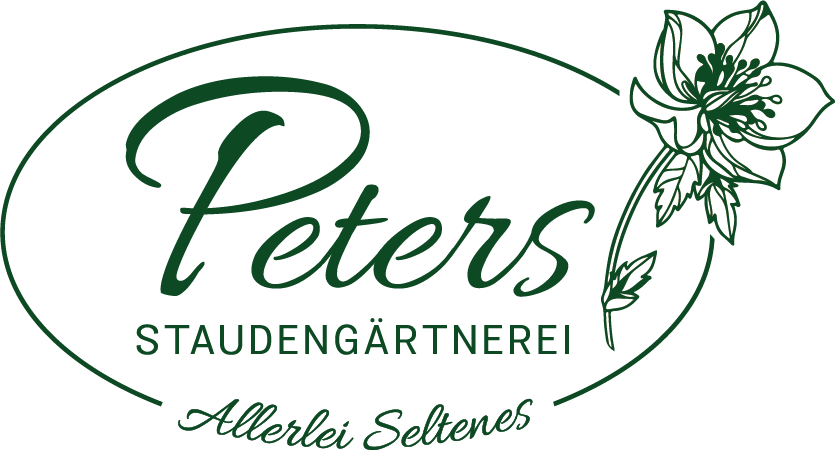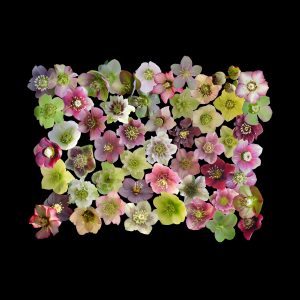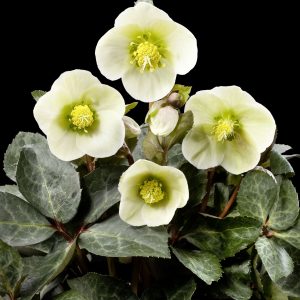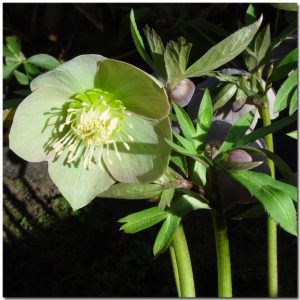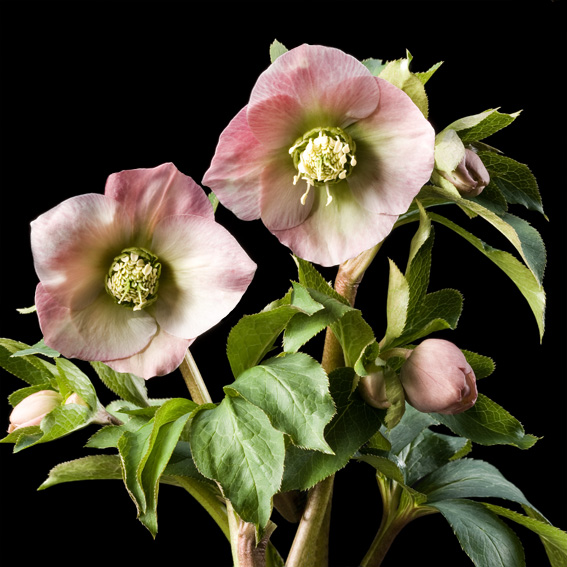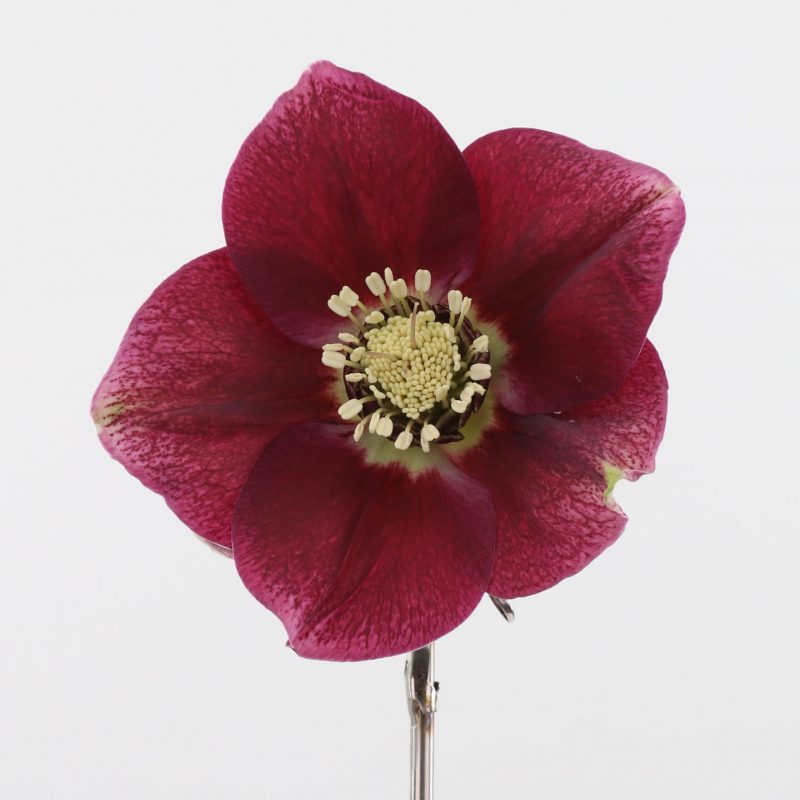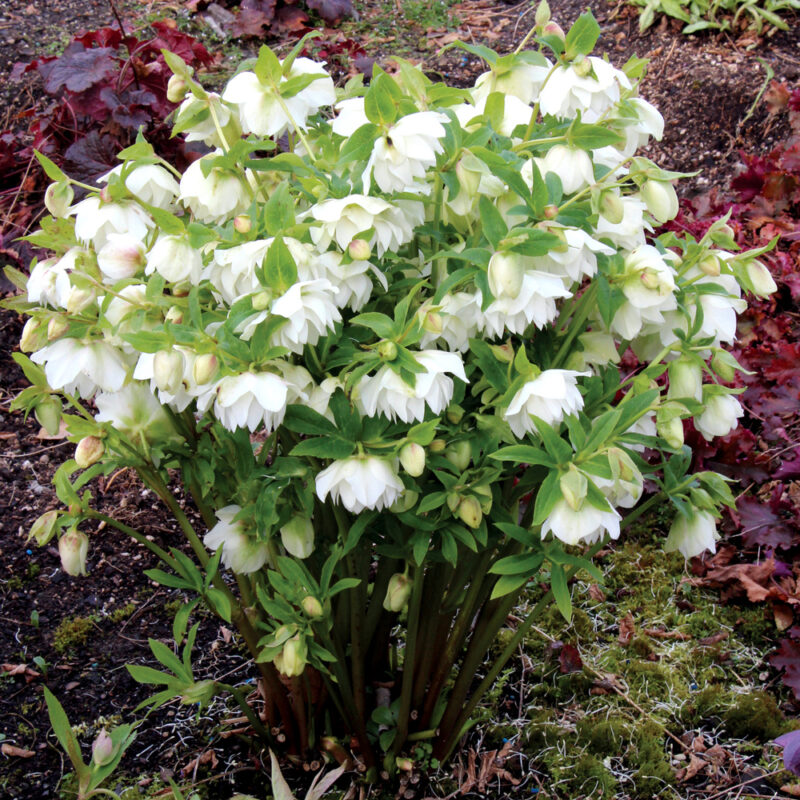From our point of view, the ultimate trick to really let it bloom in the garden. Years ago, when we were looking for the Christmas rose that bloomed as early as possible, today we are back to extending the blooming season. In terms of breeding, a lot has happened with the winter bloomers ...
But above all, you have to look at it from our perspective as a gardener. When other colleagues dawn in the dull hibernation, longing for abundance of flowers or even completing the ungrateful bookkeeping - we float from inflorescence to inflorescence and cheering full of delight. The question about my favorite variety can clearly only be answered year after year, because apart from all the colors of the rainbow there is also the growth form, flower position and habit of the meanwhile over a hundred species and varieties.
Since Helleborus need a lot of space and we want to offer you as wide a range as possible, we complete the range with some very reliable breeders. And we are always surprised at what nature gives us.
It is essential to note: Helleborus are "cold waxes", which means that they only form new roots when it is cool at night. That is why we only ship between the end of August and the end of April to guarantee rapid rooting - better safe than sorry.
In general, Helleborus are shade and penumbra perennials, they grow on the edge of the forest and have their ideal conditions there. Because they are shaded in summer by the canopy of leaves and in winter have more light through the no longer so lush canopy. Realizing this in a garden is often difficult, but not impossible. There is definitely a shadowy corner on the north side, or some deciduous shrubs and trees under which you can prepare a suitable planting area.
Helleborus love strong, humus-rich and easily drained soil. This can be done safely with good compost, some clay or loess and light drainage through gravel or small stones. You should also not forget a good dose of fertilizer, it should consist of natural fertilizers such as: horn shavings, deposited cow or horse manure, with poultry manure you should be more careful, it could burn roots and damage the plants. In any case, fertilization should be done twice a year, i.e. once in February / March when they are blooming and new leaves are growing, the second time in July / August when the plants are making new roots in order to have enough nutrients for the spring buds. What is common to all Helleborus is that they prefer neutral to alkaline soils, i.e. for the garden and Helleborus lover he should give preference to lime in the form of natural limes such as: shell limestone, eggshells, calcareous rocks such as tuff and bentonite. The planting sites should definitely be deep, as the Helleborus root their mostly fleshy roots up to 50-60 cm deep into the earth. You should also remember that the plants are forest dwellers and are therefore dry in summer and more humid in winter. So there should be the possibility of light irrigation, in frosty weather, when the leaves and flowers sag, or in too hot days in summer. Prepared in this way nothing can actually go wrong and your new Helleborus treasures, acquired by the specialist “The Perennial Gardener”, can flourish and give you a lot of pleasure!
In general, Helleborus are robust perennials that can take something, despite that you have to deal with some damage to the plants.
Wild feeding by mice, rabbits and deer can occur with fresh leaf shoots, but are rather rare.
Aphids can be fought with conventional natural and chemical spraying agents, and after severe infestation with a little liquid fertilizer, the plant can be strengthened again.
Groundworms should keep them under close observation, as they can damage the roots severely, commercial baits are used here.
Fungal diseases are the real enemies of the Helleborus:
Downy mildew can damage the leaves so much that it is best to cut them off and destroy them (not on the compost)! Splashing and strengthening the leaves (top and bottom) in good time can prevent this. The risk of infection is greatest on warm, humid summer days.
The carlavirus is fatal to the Helleborus and the plants should be destroyed immediately. This virus is characterized by black banding in the leaves, stems and flowers, as well as crippling of the whole plant. Chemical control is not possible!
The basic principle is: The better nourished a plant is, so ideal the location, the more resilient it is.
I hope you always have a “green thumb” for your plants so that they grow and bloom!
In style of
All Helleborus plants
-
Angebot : Helleborus einfache Spring Promisse
67,50 €Ursprünglicher Preis war: 67,50 €62,50 €Aktueller Preis ist: 62,50 €. inkl. MwSt.inkl. 7,8 % MwSt.
zzgl. Versandkosten

